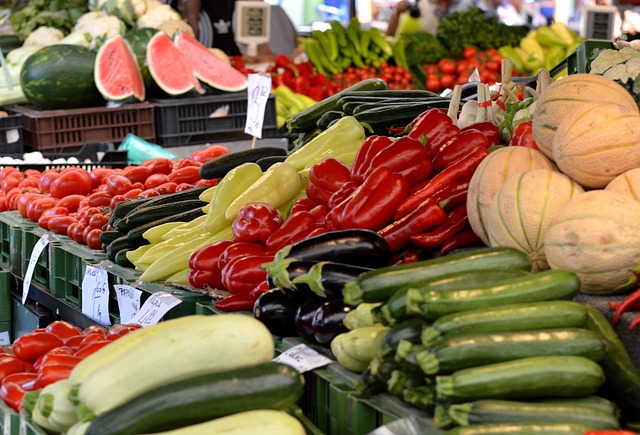Tree trimming is essential for maintaining tree health and safety, improving structural integrity, and preventing risks from overgrown branches. This process involves strategic pruning to enhance sunlight and airflow for optimal photosynthesis and plant vitality. Professional yard waste removal services are often necessary post-trimming. Tree shaping through careful trimming can extend lifespan, make trees more resilient, and improve their aesthetic appeal.
Yard waste removal and recycling play a significant role in sustainable tree care. Responsible disposal prevents soil compaction and pest/disease proliferation. Recycling yard waste through composting or specialized facilities returns nutrients to the soil, supports healthy plant growth, and reduces landfill usage. This approach not only adheres to best practices but also contributes to a circular economy by creating high-quality compost for garden soils.
In urban and suburban settings, yard waste removal and recycling are vital for maintaining the health and visual appeal of landscapes. By composting and mulching organic materials like leaves and grass clippings, communities reduce waste volume and enrich soil with nutrients, diminishing reliance on synthetic fertilizers. These practices help curb methane emissions from landfills, reduce the carbon footprint associated with chemical fertilizer production, and support biodiversity by maintaining healthy soils that nurture beneficial organisms.
Local governments and environmental agencies promote yard waste removal and recycling programs, advocating for sustainable waste management to support ecological health and community well-being. Yard Waste Removal and Recycling initiatives are key in transforming tree debris into valuable resources, conserving landfill space, and fostering sustainability within communities. These efforts not only enhance the environment but also provide economical alternatives to synthetic materials, making them an integral part of comprehensive environmental strategies.
Tree trimming and yard waste removal are pivotal practices for maintaining both tree health and community safety. This article delves into the essential role of regular tree maintenance, highlighting its benefits and the importance of efficient debris removal techniques. We will explore how these practices not only enhance the longevity and vitality of trees but also their impact on the environment. Furthermore, we’ll examine various recycling options for tree debris, including composting and mulch utilization, to underscore the role of yard waste removal and recycling in promoting sustainable landscapes. Join us as we navigate through these key aspects of arboriculture and environmental stewardship.
- Understanding the Importance of Regular Tree Trimming for Tree Health and Safety
- Efficient Yard Waste Removal Techniques and Their Environmental Impact
- Exploring Recycling Options for Tree Debris: From Composting to Mulch Utilization
Understanding the Importance of Regular Tree Trimming for Tree Health and Safety

Regular tree trimming plays a pivotal role in maintaining the health and safety of trees within both residential and public landscapes. This practice, often necessitating professional yard waste removal services, involves selectively cutting back branches to promote tree growth, enhance structural integrity, and prevent potential hazards. By removing dead, diseased, or crossing branches, trees can be shaped to allow sunlight and airflow to reach inner foliage, which is vital for photosynthesis and overall plant health. This process not only improves the aesthetic appeal of the tree but also contributes to its longevity and resilience against environmental stressors.
Moreover, effective yard waste removal and recycling are essential components of a comprehensive tree maintenance strategy. Adequate disposal of trimmed branches and fallen leaves ensures that organic matter does not accumulate, which can lead to soil compaction or create breeding grounds for pests and pathogens. Recycling yard waste through composting or specialized facilities not only supports ecological balance but also offers a sustainable alternative to landfill disposal. This not only aligns with environmental best practices but also contributes to the production of valuable compost that can be used to enrich soil quality, further supporting the health and growth of trees and plants in the ecosystem.
Efficient Yard Waste Removal Techniques and Their Environmental Impact

Efficient yard waste removal techniques play a pivotal role in maintaining both the aesthetic appeal and health of urban and suburban landscapes. As communities increasingly recognize the importance of sustainable practices, the focus has shifted towards recycling organic waste rather than merely disposing of it. Composting and mulching are recognized as key methods for reprocessing yard waste, which not only diverts significant amounts of material from landfills but also returns valuable nutrients to the soil. By harnessing the natural decomposition process through composting, communities can transform leaves, grass clippings, and other organic matter into a nutrient-rich product that supports plant growth and reduces the need for synthetic fertilizers. Mulching similarly aids in soil enrichment while also helping to suppress weeds and retain soil moisture.
The environmental benefits of these recycling methods are manifold. They significantly reduce methane emissions from landfills, where decomposing organic waste is a major source of this potent greenhouse gas. Furthermore, by encouraging the use of compost as an alternative to chemical fertilizers, these techniques help to lower the carbon footprint associated with fertilizer production and distribution. Additionally, they foster biodiversity by preserving natural habitats and promoting soil health, which in turn supports a wide array of beneficial organisms. As such, efficient yard waste removal and recycling are not only practical solutions for managing waste but also significant contributors to environmental sustainability and conservation.
Exploring Recycling Options for Tree Debris: From Composting to Mulch Utilization

Tree trimming is a routine maintenance task that not only enhances tree health but also ensures safety for people and property. As branches and leaves are cut away, the resulting yard waste represents a significant portion of overall yard waste removal and recycling needs. Effective management of this organic material through various recycling options can significantly benefit both the environment and community resources.
Local governments and environmental agencies often provide guidance on yard waste removal and recycling, promoting composting as a primary method to recycle tree debris. Composting returns nutrients back into the soil, creating a valuable resource for gardening and agriculture. Additionally, the mulch derived from this process can be utilized in various landscaping applications, serving as a cost-effective and sustainable alternative to synthetic options. Mulch not only aids in soil moisture retention but also suppresses weeds and enhances the overall appearance of garden beds or public green spaces. By implementing yard waste removal and recycling programs, communities can transform what was once waste into beneficial materials that support healthy ecosystems and reduce the need for landfill space.
Effective tree trimming is not merely a cosmetic endeavor; it plays a pivotal role in maintaining tree health and safeguarding public safety. This article has underscored the necessity of regular upkeep, which extends beyond aesthetic appeal to encompass the well-being of the trees themselves and the communities they inhabit. As we’ve explored, efficient yard waste removal techniques are crucial for environmental stewardship, reducing soil erosion, and preventing pollution. Moreover, the options for recycling tree debris, such as composting and mulch utilization, offer a sustainable approach to this organic matter, which can enrich soil quality and serve as a resource in various horticultural applications. In embracing these practices, we not only ensure the longevity and vitality of our trees but also contribute to a greener and more sustainable environment. Yard waste removal and recycling stand as significant contributions to our collective efforts in environmental conservation and urban landscape management.



